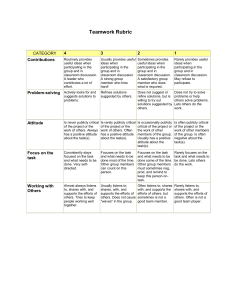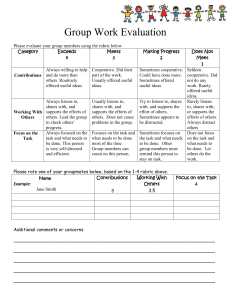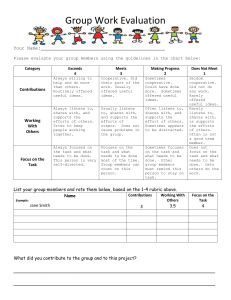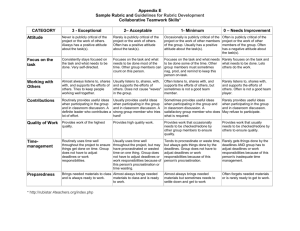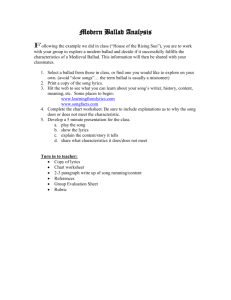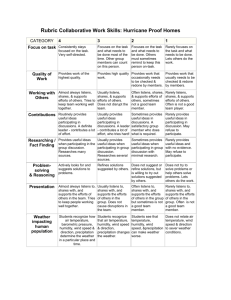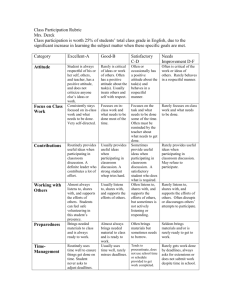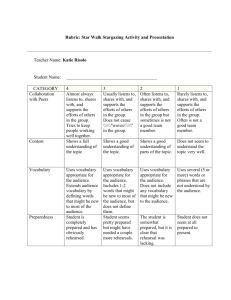Quiz2S1 - programarejava
advertisement
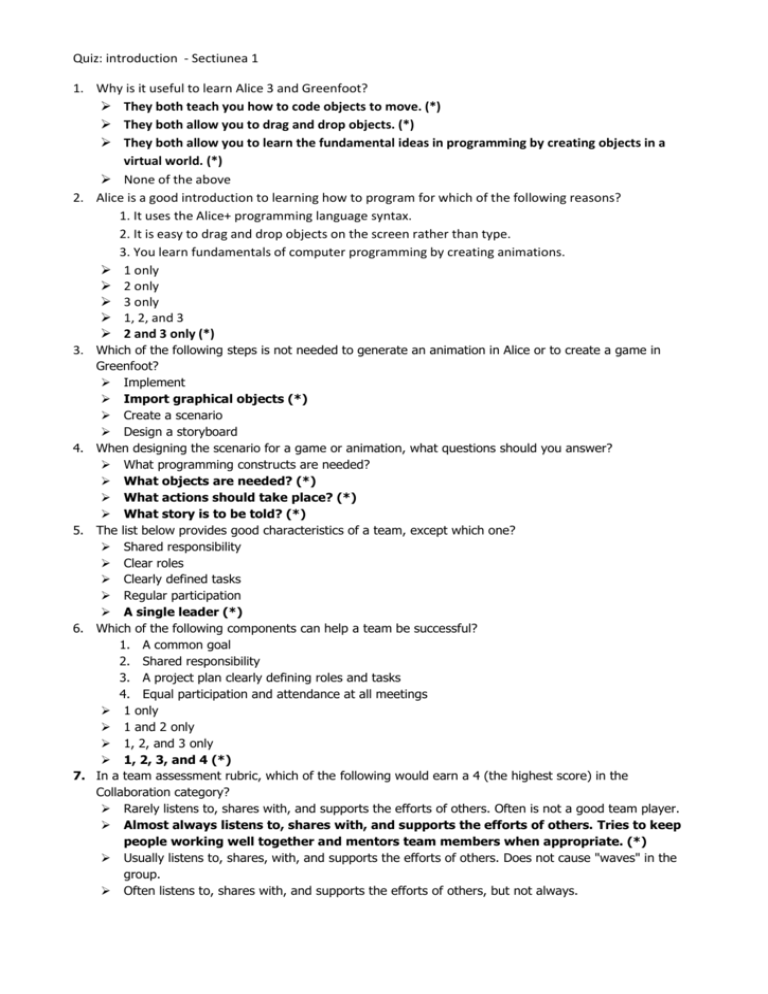
Quiz: introduction - Sectiunea 1 1. Why is it useful to learn Alice 3 and Greenfoot? They both teach you how to code objects to move. (*) They both allow you to drag and drop objects. (*) They both allow you to learn the fundamental ideas in programming by creating objects in a virtual world. (*) None of the above 2. Alice is a good introduction to learning how to program for which of the following reasons? 1. It uses the Alice+ programming language syntax. 2. It is easy to drag and drop objects on the screen rather than type. 3. You learn fundamentals of computer programming by creating animations. 1 only 2 only 3 only 1, 2, and 3 2 and 3 only (*) 3. Which of the following steps is not needed to generate an animation in Alice or to create a game in 4. 5. 6. 7. Greenfoot? Implement Import graphical objects (*) Create a scenario Design a storyboard When designing the scenario for a game or animation, what questions should you answer? What programming constructs are needed? What objects are needed? (*) What actions should take place? (*) What story is to be told? (*) The list below provides good characteristics of a team, except which one? Shared responsibility Clear roles Clearly defined tasks Regular participation A single leader (*) Which of the following components can help a team be successful? 1. A common goal 2. Shared responsibility 3. A project plan clearly defining roles and tasks 4. Equal participation and attendance at all meetings 1 only 1 and 2 only 1, 2, and 3 only 1, 2, 3, and 4 (*) In a team assessment rubric, which of the following would earn a 4 (the highest score) in the Collaboration category? Rarely listens to, shares with, and supports the efforts of others. Often is not a good team player. Almost always listens to, shares with, and supports the efforts of others. Tries to keep people working well together and mentors team members when appropriate. (*) Usually listens to, shares, with, and supports the efforts of others. Does not cause "waves" in the group. Often listens to, shares with, and supports the efforts of others, but not always. 8. In a team assessment rubric, which of the following would earn a 1 (the lowest score) in the attitude category? Is often publicly critical of the project or the work of other members of the group. Is often negative about the task(s). (*) Is rarely publicly critical of the project or the work of others. Often has a positive attitude about the task(s). Is never publicly critical of the project or the work of others. Always has a positive attitude about the task(s). Is occasionally publicly critical of the project or the work of other members of the group. Usually has a positive attitude about the task(s). 9. The following provides examples of a team rubric, except which one? Ensures that there will be no errors in the project. (*) Set of rules and standards. Helps the team meet its criteria for success. Defined by the team. 10. Why might you create a journal for programming? 1. To document new concepts and techniques. 2. To track problems in your code and how you solved them. 3. To serve as a review guide when preparing for an exam. 1 only 2 only 2 and 3 only 1, 2, and 3 (*) 11. What kind of information is useful in a programming journal? New programming concepts Problems encountered and how you solved them Both 1 and 2 (*) Neither 1 nor 2 12. Which of the following is not a good tip for protecting information and systems (cyber security)? Share strong passwords. (*) Keep anti-virus software up-to-date. Only open emails from trusted sources. Follow your organization's cybersecurity rules and report issues when they happen. 13. Which of the following is an example of behaving ethically online? Copying and pasting parts of someone elseメs work into your own without giving them credit. Posting information about people at school that they would never want shared. Pretending you are someone else in an online chat room. Starting a cruel social network page about members of the community. Refraining from using rude or bad language online. (*)
